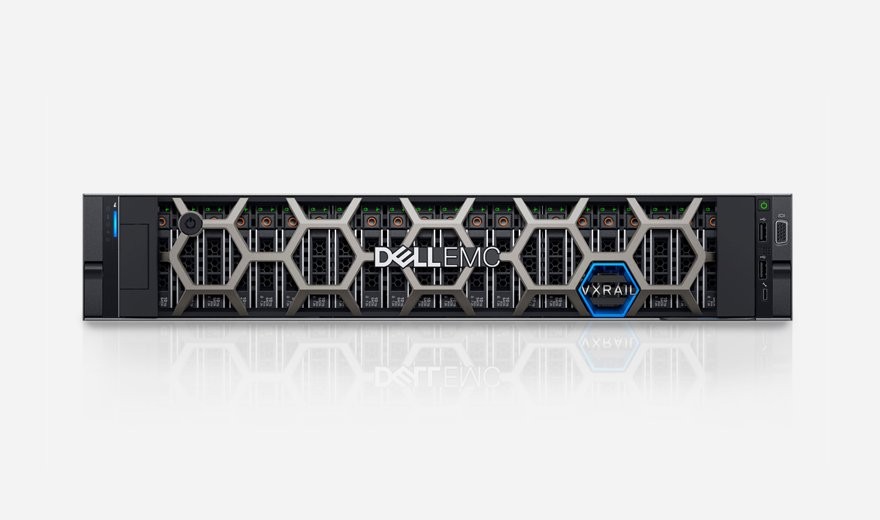Dell Technologies introduces Dell EMC VxRail hyperconverged infrastructure (HCI) systems with enhanced performance based on recently launched Dell EMC PowerEdge servers. The leader in HCI systems also delivers new software advancements and the introduction of dynamic nodes that evolve how customers use VxRail to more effectively use existing resources and support demanding workloads with Dell Technologies storage.
As the only HCI system jointly engineered with VMware, VxRail delivers unique automation and orchestration capabilities that allow its more than 12,000 customers to accelerate business outcomes across core data centers, cloud and edge locations. According to IDC research, VxRail customers experienced 452% five-year ROI, 70% more productive IT teams and 92% less unplanned downtime compared to previous IT environments.
“Customers turn to Dell EMC VxRail because it provides a simple IT experience and path to hybrid cloud,” said Jeff Boudreau, president and general manager, Infrastructure Solutions Group, Dell Technologies. “What makes VxRail so simple is Dell’s investment in software development that allows for easy adoption of our latest hardware, enhances the VMware experience and simplifies the entire IT lifecycle. Today’s updates help customers get more from their existing resources, support even more workloads and simplify deployment to better meet business demands.”
Extreme performance for mission-critical workloads
New VxRail systems with the latest Dell EMC PowerEdge server technology, including 3rd Generation Intel Xeon® Scalable processors, deliver 42% more cores for faster performance when compared to previous generations.3 Optional Intel Optane persistent memory 200 series increases bandwidth by 32% on average over the previous generation.
Select VxRail systems are also being updated with 3rd Generation AMD EPYC™ processors, offering customers flexibility and scalability with up to 64 cores per processor with increased performance to support a wide range of workloads and use cases.
Continued advancements to VxRail HCI System Software allow for a seamless experience when adopting next generation platforms with simplified VxRail deployment and management. Other VxRail system enhancements include:
• VxRail V Series now offers NVIDIA A40 or A100 Tensor Core GPU options. When combined with NVIDIA AI Enterprise software and NVMe caching capabilities, they offer greater performance and simpler deployment for demanding AI and machine learning applications.
• VxRail P Series provides up to a 20% increase in capacity to better support a range of workloads such as VDI, streaming video and medical imaging.
• VxRail E Series offers customers more flexibility with 50% more PCIe slots to add additional resources such as network or fibre channel cards.
Customers can also expect faster application response from Intel-based PowerEdge systems with the addition of PCIe Gen 4, which doubles bandwidth and offers 33% more PCIe lanes to speed data processing.
Introducing Dell EMC VxRail dynamic nodes
Dell Technologies introduces VxRail dynamic nodes—compute-only systems designed to help customers simplify operations, better manage storage resources and reduce costs by supporting more workloads and extending VxRail environments to include external storage options. Customers can expand VxRail’s operational model to external storage by sharing VMware vSAN storage capacity across clusters via VMware vSAN HCI Mesh.
“IT leaders want to reduce data center complexity, make the most of their IT budgets, and optimize productivity. Hyperconverged infrastructure helps them do all three,” said Paul Nashawaty, senior analyst, Enterprise Strategy Group. “With today’s VxRail updates, Dell Technologies is redefining what businesses can expect of HCI, and Dell’s approach makes it more powerful, easier to use and capable of handling even more demanding workloads.”
VMware Cloud Foundation on VxRail, as a hybrid cloud infrastructure platform, can be configured with dynamic nodes to use Dell EMC PowerStore, PowerMax or Unity XT as primary storage. Customers can flexibly scale compute and storage independently to meet workload needs, extending VxRail’s operational model and tight VMware integration including support for VMware Virtual Volumes with a single source of Dell support.
“Combining the simplicity and agility of VMware Cloud Foundation on Dell EMC VxRail with enterprise storage arrays like Dell EMC PowerStore helps us address even more workloads,” said Eric Miller, vice president of private cloud, Rackspace. “It’s the perfect blend of resources, allowing us to take advantage of HCI’s automation, hybrid cloud’s agility and enterprise storage’s performance and efficiency.”
VxRail software supports self-deployment and latest VMware releases
VxRail HCI System Software advancements give customers greater control over installation with new self-service tools. Customers can validate, orchestrate and automate cluster deployment on their own time, ideal for enterprises with remote or distributed environments. Additional software capabilities allow customers to better meet workload demands by dynamically redeploying or reallocating nodes within clusters.
Further software advancements make lifecycle management (LCM) even more streamlined by offering VMware updates, such as NSX-T and Tanzu, in a single upgrade cycle. LCM is further simplified by adding the NVIDIA AI Enterprise and VMware installation bundle to the LCM process for easier deployment. Customers can meet maintenance windows with more flexible upgrade options and automatically validate infrastructure with enhanced compliance reporting.
“VxRail sets the pace for HCI adoption because customers value the seamless experience jointly created by Dell Technologies and VMware,” said Lee Caswell, vice president, marketing, Cloud Platform Business Unit, VMware. “By quickly adding support for the latest vSAN features, including HCI Mesh, VxRail better secures HCI value for high-performance workloads, AI/ML developer environments, and capacity-intensive compute applications.”




